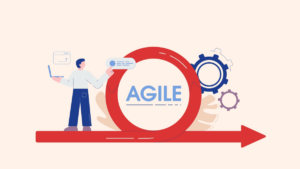Accept Cookies & Privacy Policy?
We use cookies to ensure that we give you the best experience on our website. If you continue to use this site we will assume that you accept and understand our Privacy Policy, and our Terms of Service.
We are all aware of the fact that Automation is the most logical way to achieve Quality in the product. But when we talk about Enterprise level Automation then it is not only testing, rather it includes development, IT operations, QA and business teams. The major problem here is scaling it at Enterprise level, which results in delayed automation.
In this post we will discuss Enterprise level testing along with common challenges to achieve test automation and how we can take steps to resolve the same. Stay tuned till the end as we will share some of the approaches used by ThoughtFrameworks at real-time projects.
Generally, automation in enterprise software testing covers the following:
– Web Automation
– API Automation
– Mobile Automation
– Device Test Automation
– Performance Testing
– Security Testing
– End-to-end Testing
– Visual Automation
When we talk at enterprise level the first thing we need to consider is to design a framework or automation solution which can be scalable, else we will end up with multiple frameworks inside the enterprise or spending a big amount of money in buying automation tool licences.
The team who is responsible to provide Enterprise level Automation solutions should be aware of all the testing types mentioned in the above list, we will have a quick overview on the same. In the above list we have mentioned both functional and non-functional testing types.
We realise that having QA experts in each and every testing type is quite difficult, and in the current IT market it is a big pain point for Enterprise to hire the right talent. To resolve the same, many Enterprises are considering taking help from QA Vendors who have the right team to implement the Automation and provide the ROI on the investment for achieving Test Coverage with Automation.
Most of the enterprise organisations have implemented test automation into their software release cycle, and mostly in the form of UI Automation. But they were unable to scale it or somehow miss the deadline in getting enough test automation coverage. Due to lack of coverage either it won’t make it to the pipeline or slowly get pushed into the backlogs.
In this section we will try to deep dive into the common challenges for Enterprise Test Automation. Below are the three main challenges faced in Enterprise Automation:
Lack of resources usually means lack of time, people or money. In most of the enterprise the estimation falls behind as sometime it is difficult to get the right skill set to do the Automation. The important catch here is the expertise in tools, as there are many tools available in UI Automation alone, so getting the right resource is always a pain point for the HR team.
Defining the right test approach and automation tool is also becomes a big task, as there are many paid tools also available so sometime enterprise avoid automation due to budget issue for buying licensed tools.
Lack of expert resources and mainly QA with programming language make the path difficult in keeping the test framework in sync with the constantly evolving enterprise application.
It is easy to automate common user interfaces by using Selenium or any UI Automation tool, but it’s another to automate the most business-critical transactions, which typically pass through multiple technologies (mobile, APIs, SAP, mainframes, etc.) and require sophisticated setup and orchestration. Due to this complexity it is sometimes difficult to get good coverage only from UI automation test scripts.
Due to Agile methodology it is another difficult task to automate test cases with the same pace as the development cycle. Frequent changes by team makes the life of automation QA more difficult and at the end of the day teams have very less coverage from automation and need to depend on manual testing for most of the components.
Most test automation initiatives start with the highest-performing teams in the organisation. It makes sense—they’re typically the most eager to take on new challenges and the best prepared to drive the new project to success. Chances are that if you look at any organisation with pockets of test automation success, you will find that it’s achieved by their elite teams.
This is a great start, but it must scale throughout the entire organisation to achieve the speed, accuracy, and visibility required for today’s accelerated, highly automated software delivery processes.
To achieve Automation we need to make sure that instead of waiting for the UI to be ready for Automation we should try to bring automation during the early phase of software development. To achieve the same API automation approach needs to be considered.
The biggest benefit we can have with API Testing is that we can often test early. This is because the API component is often developed before the UI component which allows for earlier testing and feedback as well, it can also help steer development on the components that integrate with the APIs. This will also help us to achieve maximum coverage which was difficult to achieve with UI automation.
Scalability needs to start early. It is always advisable to avoid running with a strategy that doesn’t fit the current team or is unable to expand with the team as it grows in the future. It’s important to adopt an approach that is flexible in all areas, from the technical aspects to team hierarchy and how resources are managed.
The best part here is that it is not always mandatory to have a QA expert in-house, you may consider hiring a QA vendor to mentor you on testing approach, scalability best practices and team structuring.
While deciding on the approach with scalability we need to make sure that we have considered the below points
First we need to understand what the business priorities are, what types of skills and technical expertise those priorities require and try to hire the right team for the job. With a solid team in place, we can scale up or down as needed. But we cannot always assure that we can hire employees according to the exact requirement, so the best approach is to upskill existing employees.
To achieve upskilling, the two most important steps need to be integrated are Mentorship programs and Self Learning. Mentorship opportunities are particularly useful as enterprises can utilise their existing resources and also it helps the employees to learn new tech stack in the market. For example we may have less employees with Cypress but a larger Selenium resources are on bench, in that case mentorship programs can help to upskill the Selenium resources with Cypress expertise.
As mentioned another way to encourage upskilling is by encouraging a bottom-up approach to learning. It is not always possible to have employees from all automation tools or technologies available in the market. Let’s take an example, if we have a project where we need to use Appium for mobile automation but we don’t have any employees who are skilled with the tool, in that case the bench strength can be utilised. Enterprise can arrange online courses for the employees to learn Appium and the same can be helpful to deliver the Automation tasks.
By now we must have realised that Automation in Enterprise Software Testing is not easy as it sounds. In-fact most of the enterprises are considering taking help from Expert QA Vendors like ThoughtFrameworks who can help in Test Automation setup at enterprise level with maximum coverage.
We at ThoughtFrameworks make sure that the Automation Solutions we design should be scalable and can be consumed across the enterprise. As we have a large team who has expertise in multiple Test Automation tools and frameworks so we can bring a wide variety of talents to achieve the target.

I’ve been in the Agile trenches for years now—coaching teams, facilitating sprints, navigating the choppy waters of transformations that promised the moon but barely delivered a sprint review. If there’s one thing I’ve learned, it’s that Agile is like water—it evolves, it adapts, and sometimes, it drowns you if you’re not prepared.

So picture this: You’re the air traffic controller of a chaotic airport where the planes (developers) don’t always listen, the passengers (stakeholders) want to change destinations mid-flight, and the weather (unforeseen blockers) is always unpredictable.

Imagine a world where testing is no longer a bottleneck. No more endless cycles of manual effort, no more missed defects due to human fatigue, and no more panic at the eleventh hour before a major ERP rollout.

Imagine a world where testing is no longer a bottleneck. No more endless cycles of manual effort, no more missed defects due to human fatigue, and no more panic at the eleventh hour before a major ERP rollout.

Let’s talk about GenAI and testing in 2025—the wild west of technology where machines are not just smart, but scary smart. GenAI (that’s Generative AI for the uninitiated) is running the show everywhere. It’s writing poetry, designing ads, debugging code, and probably plotting to take over my job as I write this blog.

Ah, 2024—you’ve been a year, haven’t you? For us at Thought Frameworks, this year wasn’t just about running the usual QA/QE playbook. Nope, we went full throttle into the future—tinkering, testing, and transforming everything from ERP systems to the ever-evolving world of SAP, GenAI, and security testing.
Accept Cookies & Privacy Policy?
We use cookies to ensure that we give you the best experience on our website. If you continue to use this site we will assume that you accept and understand our Privacy Policy, and our Terms of Service.
| Cookie | Duration | Description |
|---|---|---|
| cookielawinfo-checkbox-analytics | 11 months | This cookie is set by GDPR Cookie Consent plugin. The cookie is used to store the user consent for the cookies in the category "Analytics". |
| cookielawinfo-checkbox-functional | 11 months | The cookie is set by GDPR cookie consent to record the user consent for the cookies in the category "Functional". |
| cookielawinfo-checkbox-necessary | 11 months | This cookie is set by GDPR Cookie Consent plugin. The cookies is used to store the user consent for the cookies in the category "Necessary". |
| cookielawinfo-checkbox-others | 11 months | This cookie is set by GDPR Cookie Consent plugin. The cookie is used to store the user consent for the cookies in the category "Other. |
| cookielawinfo-checkbox-performance | 11 months | This cookie is set by GDPR Cookie Consent plugin. The cookie is used to store the user consent for the cookies in the category "Performance". |
| viewed_cookie_policy | 11 months | The cookie is set by the GDPR Cookie Consent plugin and is used to store whether or not user has consented to the use of cookies. It does not store any personal data. |
Ready for a Quality Software?
Let’s Dig Deep Into Your Thought!